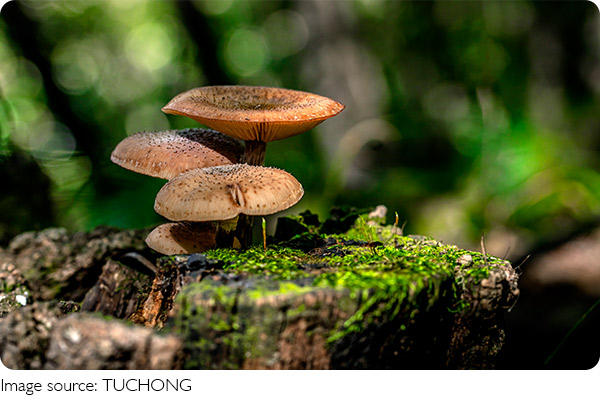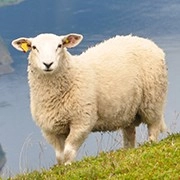Nature’s Secret Partners!

Mushrooms, often seen as mysterious organisms, play a vital role in the ecosystem.
They are neither plants nor animals but belong to the fungi kingdom.
What makes mushrooms truly fascinating is their ability to grow in harmony with trees and herbs, forming a vital connection that benefits the surrounding environment. Understanding how mushrooms coexist with trees and herbs reveals their importance in maintaining biodiversity and promoting healthy ecosystems.
1. The Symbiotic Relationship Between Mushrooms and Trees
Mushrooms form symbiotic relationships with trees through a process known as mycorrhizal association. In this partnership, the fungal networks extend their mycelium (underground root-like structures) and interact with tree roots.
How Does Photosynthesis Work? The Secret Behind Plant Energy!
Ever Wondered Why Trees Are Rare On Grasslands? Learn About The Factors Shaping This Unique Ecosystem!
Why You Should Send a Carnation on Mother's Day—The Meaning Behind Every Color Revealed!
Unlock the Secret to Growing Mushrooms at Home – It’s Easier Than You Think!
8 Tulip Colors & Their Hidden Messages—Find the Perfect One!
Learn Essential Tips To Care For Your Succulents, Keep Them Healthy, And Avoid Rotting!
Through this interaction, the mushrooms provide the trees with essential nutrients like phosphorus, nitrogen, and trace elements, which the trees cannot absorb directly from the soil. In return, the trees supply the fungi with sugars and organic compounds produced through photosynthesis.

Types of Mycorrhizal Mushrooms: Many mushroom species, such as chanterelles, porcini, and morels, form these symbiotic partnerships with trees. These mushrooms help enhance tree health by promoting better water absorption and overall resilience to disease and environmental stress.
Benefits to Forests: The mycorrhizal relationship is crucial for the health of forest ecosystems. It helps trees grow stronger and faster while enriching the soil, leading to greater biodiversity within the ecosystem. By aiding the trees' nutrient intake, mushrooms help improve the overall resilience of forests, making them more adaptable to changing conditions.
2. Mushrooms and Herbs: A Subtle Cooperation
While trees are often the main partners for mushrooms, herbs also play an important role in this natural relationship. Some mushrooms, like those in the genus Truffle, grow in tandem with herbs, benefiting from the organic matter released by the plants around them.
Fungi and Medicinal Herbs: Certain medicinal mushrooms, like Reishi and Cordyceps, can interact with specific herbs. These mushrooms and herbs have been used for centuries in traditional medicine to promote immune system health, reduce inflammation, and improve energy levels.
The Role of Organic Matter: The leaves, roots, and decaying parts of herbs provide a nutrient-dense environment for mushroom growth. As herbs decompose, they release organic compounds that mushrooms feed on, promoting their life cycle.

3. Mycelium Networks: Connecting Trees, Herbs, and Mushrooms
Mycelium, the underground network that connects mushrooms to plants and trees, is like the internet of the natural world. Through this network, trees, herbs, and fungi exchange nutrients and communicate. The mycelium connects to the roots of trees and plants, facilitating the transfer of water, minerals, and other nutrients.
The Role of Mycelium in Ecosystem Health: This vast underground system not only benefits individual organisms but also promotes the overall health of the ecosystem. By facilitating nutrient cycling, the mycelium network contributes to soil fertility, ensuring that the surrounding flora remains healthy.
Interconnectedness of Nature: The presence of mushrooms in an environment is often an indicator of a balanced and healthy ecosystem. Their symbiotic relationship with trees and herbs highlights the interconnectedness of nature.
4. The Importance of Fungi for Sustainable Agriculture
Understanding the relationship between mushrooms, trees, and herbs has important implications for sustainable agriculture. By promoting fungal health and encouraging the growth of mycorrhizal fungi, farmers can improve soil quality, increase crop yield, and reduce the need for chemical fertilizers.
5. How to Encourage Mushrooms to Grow in Harmony with Plants
If you’re looking to foster a relationship between mushrooms, trees, and herbs in your own garden or farm, there are a few practices you can implement.
Plant Trees and Herbs Together: Ensure your garden includes a mix of tree species and herbs to encourage mushroom growth.
Use Organic Practices: Avoid the use of synthetic pesticides or fertilizers, as these can disrupt the natural balance of the ecosystem.
Create a Moist Environment: Mushrooms thrive in humid conditions, so keeping the soil slightly moist and the air humidity high can encourage healthy mushroom growth.
Mushrooms, trees, and herbs share a delicate, interdependent relationship that helps sustain and enrich ecosystems. From their role in nutrient cycling to their contribution to forest and agricultural health, fungi are essential partners for trees and herbs. By understanding these relationships and nurturing them, we can cultivate more sustainable, resilient environments that benefit both plant and fungal life!

 · Plant Team
· Plant Team